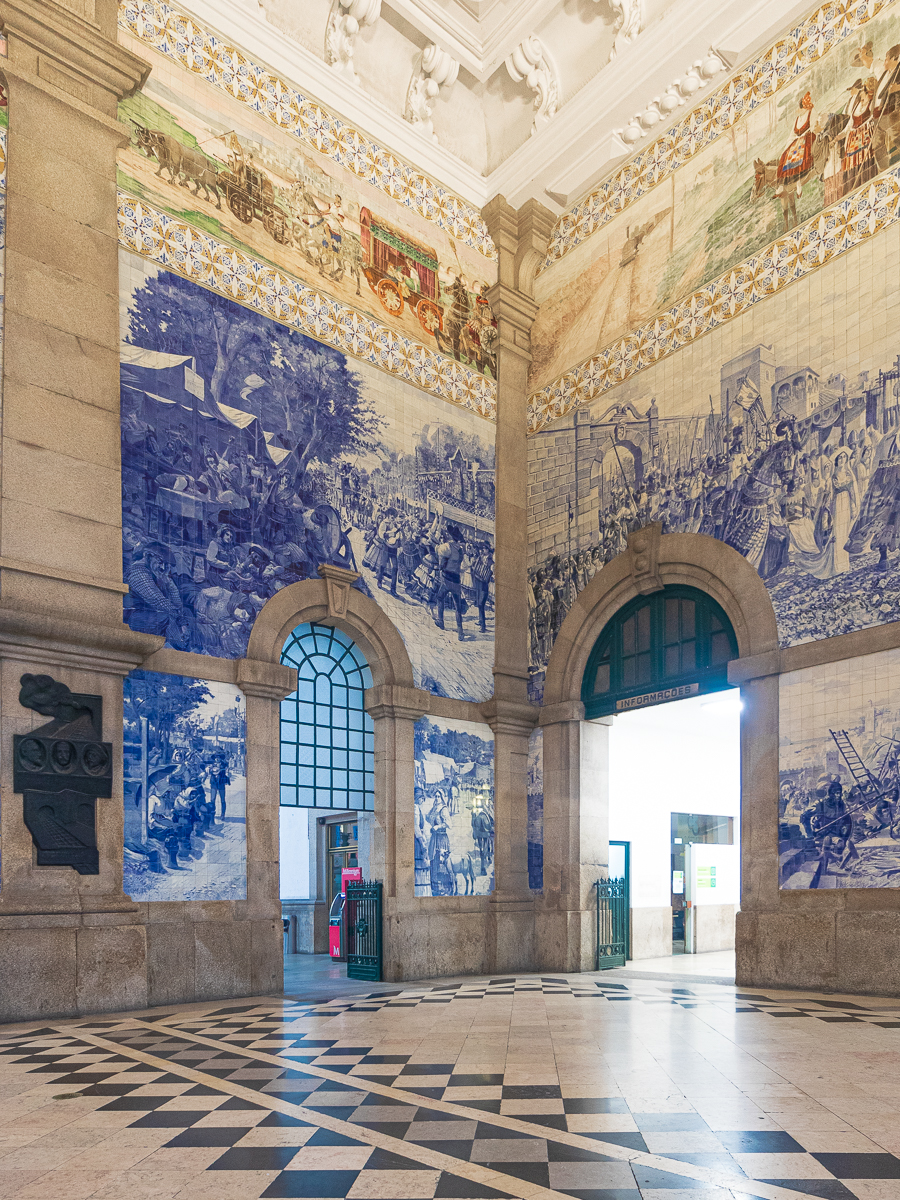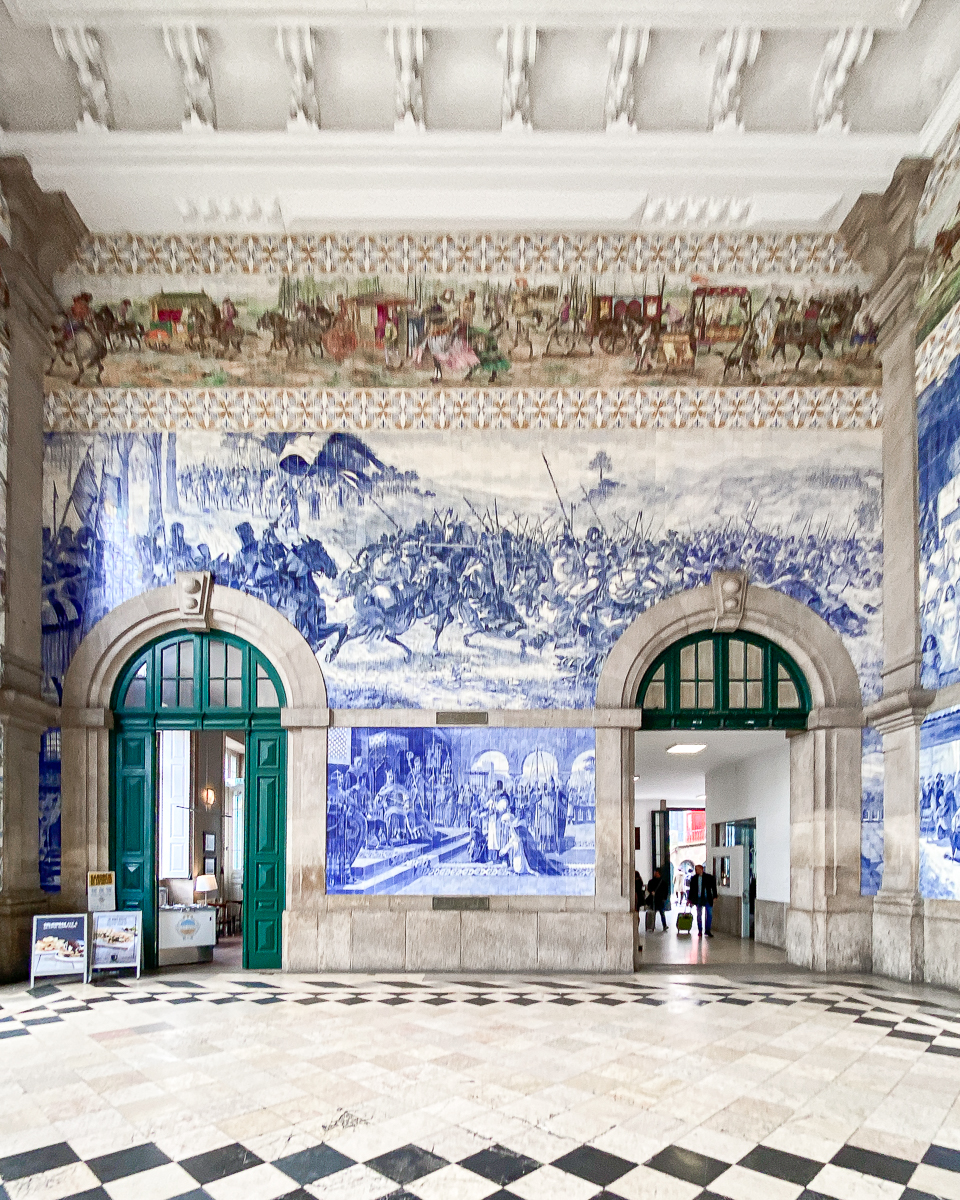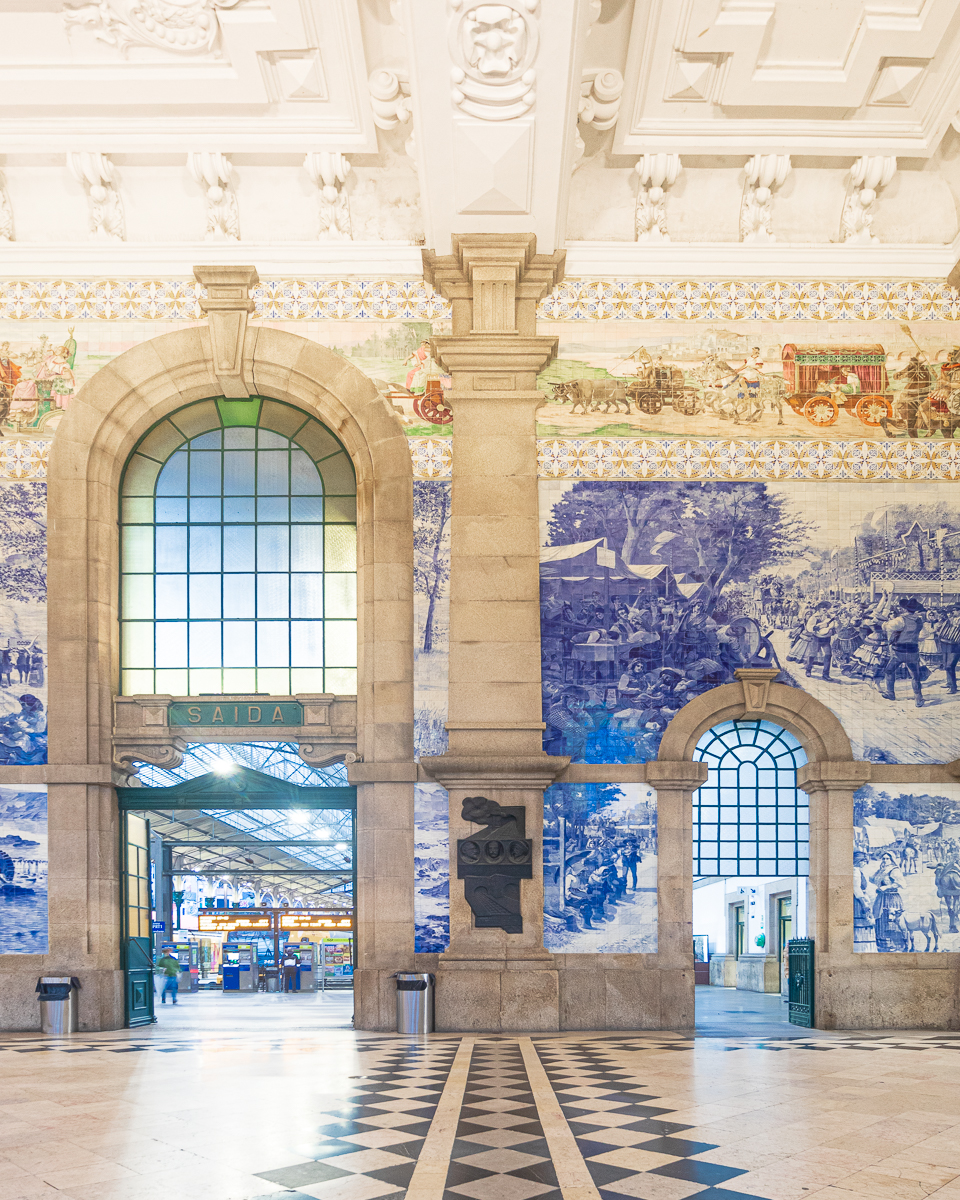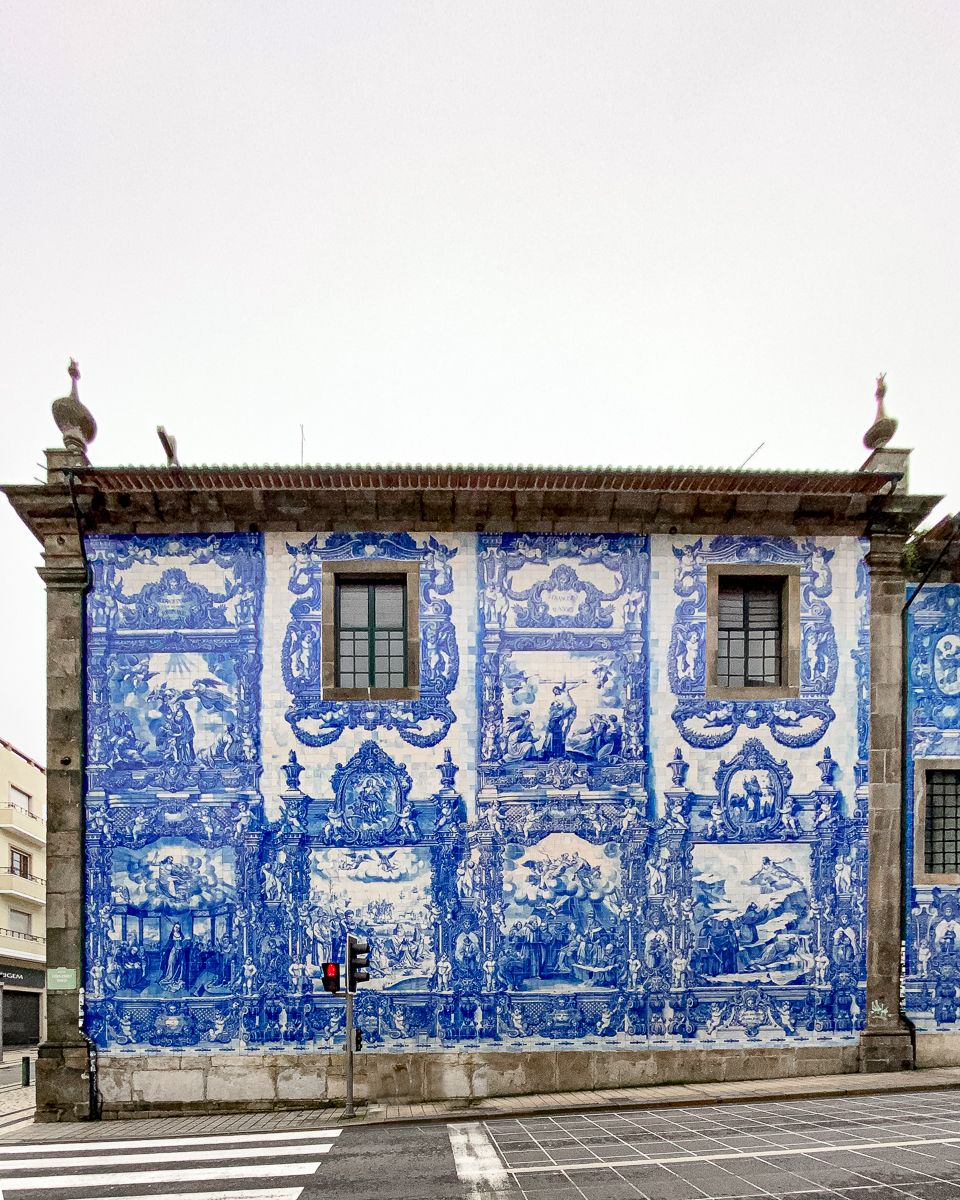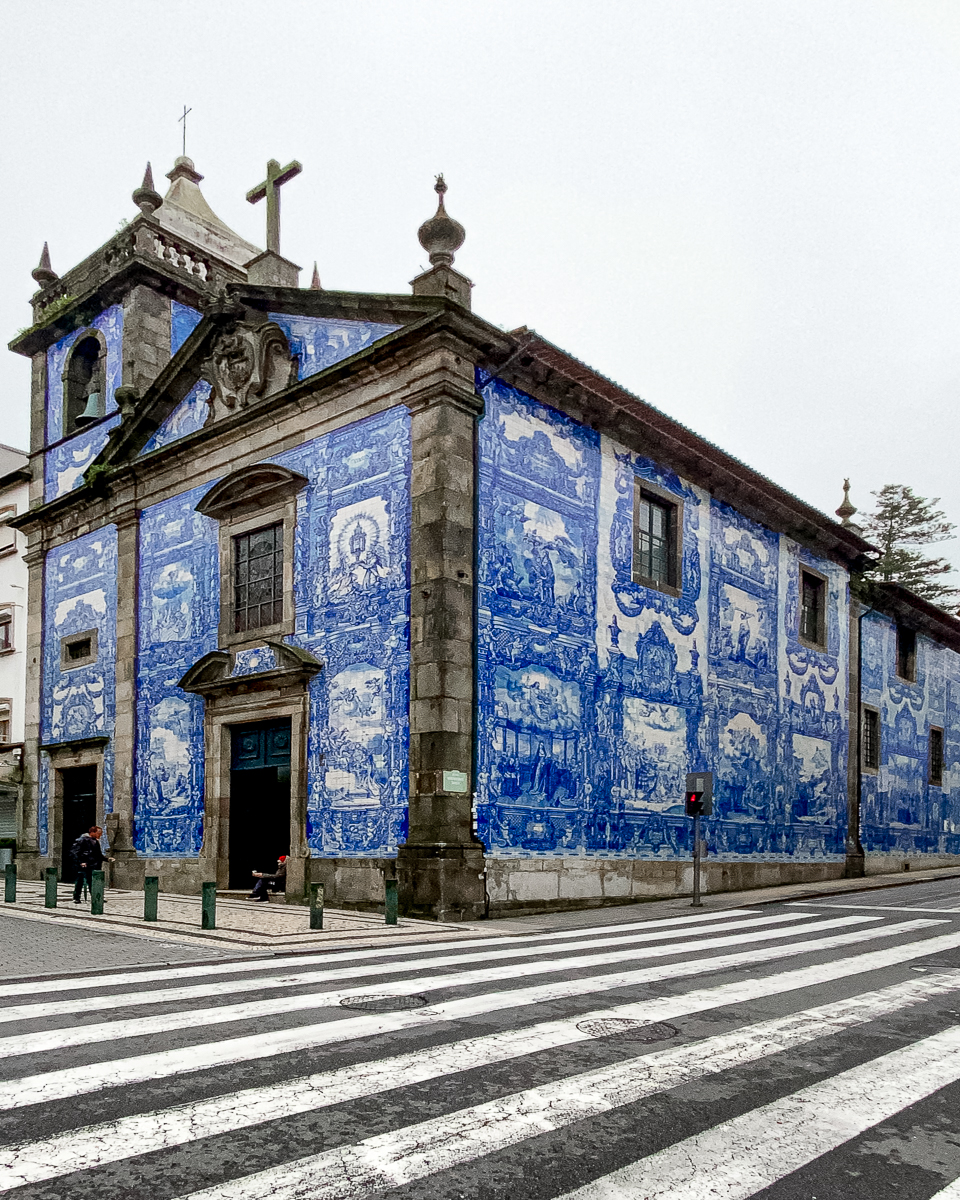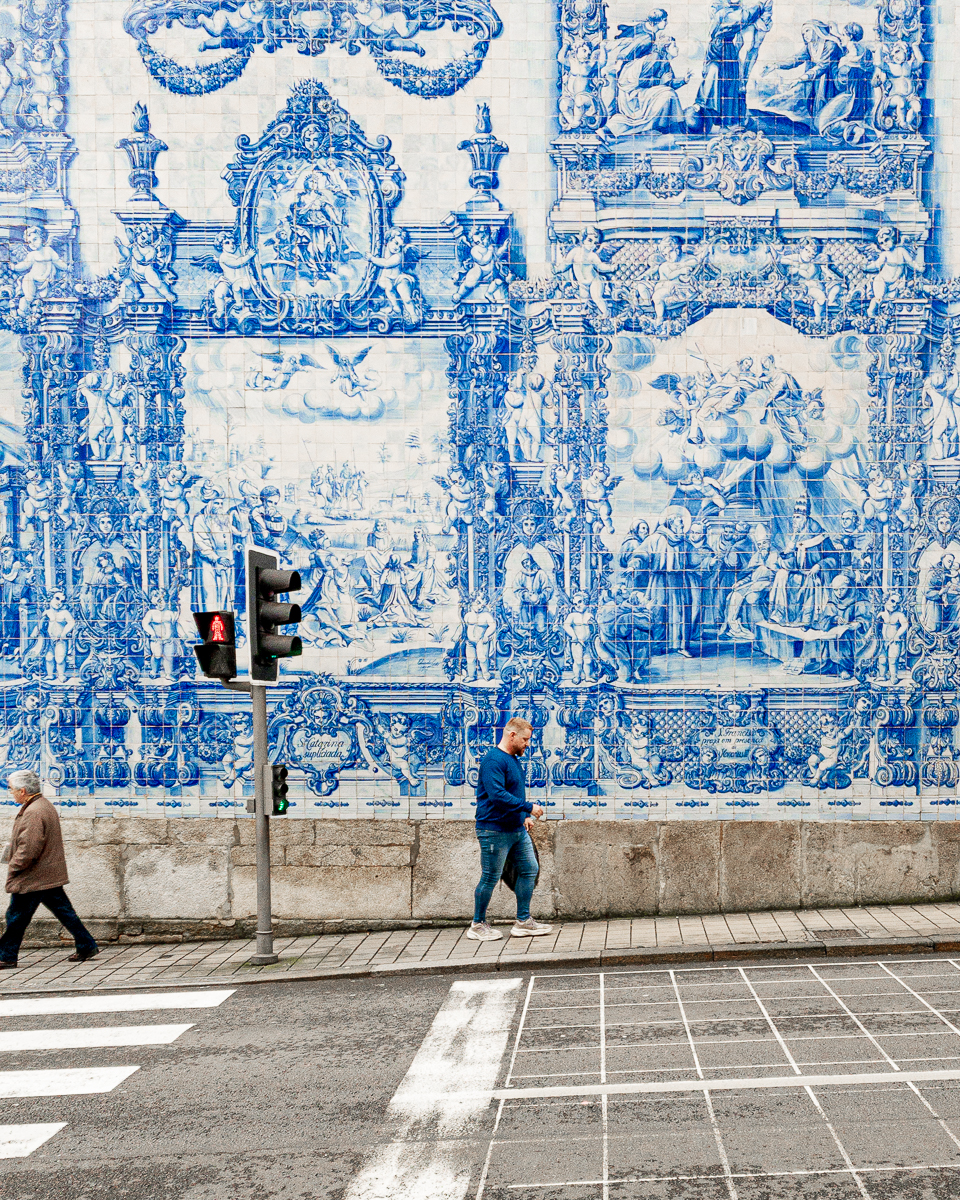I’m not going to lie…. My main purpose of visiting Porto was to take in those azulejos. If you’ve seen pictures of Porto (and other parts of Portugal) you’ve seen the beautiful, blue and white tiles that done the facades and interiors of buildings and churches.
It was King Manuel I of Portugal who brought azulejo tiles from Seville, in Spain, to Portugal, during the fifteenth century. Azulejos were very common in parts of the in Seville and Grenada (Areas heavily influenced by Moorish architecture and art). The word azulejo comes from the Arabic word al zellige which means “the polished stone”.
Portugal imported its azulejos tiles from Spain, Italy and Holland until the Portuguese mastered the art during the 16th century. In Portugal, the art has developed its own forms, changing from being just geometric shapes and flowers to something that tells stories, mostly of historical or religious themes. The colour palette is dominated by blues and whites. These colours were influenced by the Age of Discoveries roughly between 15-18th centuries.
Here are some of the most impressive Azulejos that are found in Porto Portugal.
São Bento Railway Station

This is probably one of the prettiest train stations in the world thanks to its vestibule being adorned with azulejos tiles covering every wall that shows important historical events in Portuguese history.
First opened in 1916, the tile work began five years after the station was built. And although it might look ordinary from the outside, the real beauty lies within. The main hall boasts of an impressive tile work that consists of 20,000 tiles depicting the history of Portugal there are about 20,000 tiles. The tile work took almost 15 years to complete them all.
A special mention should go to the platforms on the station. They are not covered in tiles… but the stained glass is impressive. The Station is a short walk from Hotel Catalina Porto
Igreja dos Congregados

Igreja dos Congregados, also known as Igreja de Santo Antonio dos Congregados (the Church of St. Anthony’s Congregation), is another must-visit attraction if you want to obsess over the azulejos in Porto. It’s right across the Sao Bento Railway Station.
Completed in 1680, this church went through many changes in history. It was a hospital and during the siege of 1832 it was used for military equipment storage The façade is elaborately decorated with blue and white tiles, this tile work is so stunning
Church of Saint Ildefonso

This 18th-century church is the main feature of Batalha Square and it’s hard to miss alright. The stunning proto-Baroque church is completely covered in the traditional tiles showing scenes from the life of Saint Ildefonso and figurative imagery from the Gospels. This church was built in 1739 and features a proto-Baroque style with a façade of azulejo tile work. This is a twin-towered church with a graceful baroque style. The tiles are the work of Jorge Colaco, who used 11,000 tiles used to cover the entire façade of the church (the same artist is also behind the tile work in Sao Bento station) The tile work was completed in 1932.
The church has seen a lot of damage over the years from storms to battles, so much has been repaired or replaced. The Church (along with Sao Bento) was declared a UNESCO World Heritage Site in 1996 You can’t actually go into the church so this one is best enjoyed from afar.
It’s only 7 minutes away from the station Sao Bento Railway Station.
Carmo & Carmelitas Churches

These twin churches may look like one building but they’re actually two (built a century apart so the monks and nuns couldn’t have contact), however, they share a bell tower so there’s a super narrow house built in between connecting them so the bells can be rung. While you puzzle over the sense in it all, take a picture at the epic azulejos wall on the side of the Carmo church.
Surprisingly (but apparently completely normal) exterior of the church was completed in 1878 but the interior was completed over a century and a half prior. As for the tile work, it was completed in 1910 and it pays tribute to Nossa Senhora.
Capela das Almas

The Capela das Almas, also known as the Chapel of Souls, was the first azuleos that I say when I arrived in Porto. Its exquisite blue and white tiles made me stop in my tracks and cried a tear of joy… they are just STUNNING. While the architecture of the chapel is relatively simple, the fact that it’s covered with 15,947 tiles Which I think is the record for the number of tiles used on an exterior in Porto is what makes it stand out.
This chapel was built in the 18th century, tiles were designed by potter Eduardo Leite, made in a factory in Lisbon, and placed in 1929. Capela das Almas is a chapel located in one of the ‘Shopping’ streets of Porto next to the Bolhão subway station.
Porto Is a Tile Lovers Dream
Almost at ever turn in Porto there are tile situations that bring such joy. Exterior facades and interiors.. even one of the hotels I stayed in (Porto Catalan) had tiles in the bedrooms. The tile lovers’ dream
Hope you found this little guide useful. Message me if you went to any of the locations or found some incredible tiles that I missed. Why don’t you pin this to one of your favourite Pinterest boards for future reference.
